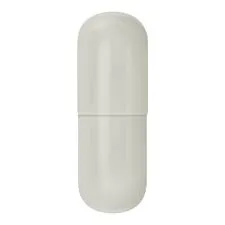
Dec . 06, 2024 16:34 Back to list
hydroxypropyl methyl cellulose ether
The Versatile Applications of Hydroxypropyl Methylcellulose Ether
Hydroxypropyl methylcellulose (HPMC) is a non-ionic, water-soluble polymer derived from cellulose, a natural polymer. The chemical structure of HPMC is characterized by the presence of hydroxypropyl and methyl groups attached to the cellulose backbone, which significantly enhances its functionality and versatility. This compound has garnered significant attention across various industries due to its unique properties, becoming a crucial ingredient in pharmaceuticals, food processing, cosmetics, and construction.
Properties of Hydroxypropyl Methylcellulose
HPMC exhibits a range of beneficial properties that contribute to its widespread use. One of its most notable features is its ability to dissolve in both hot and cold water, forming a viscous solution. This property makes it an excellent thickening and binding agent. Additionally, HPMC is known for its film-forming capabilities, which are valuable in many applications, including coatings and adhesives. Furthermore, HPMC is chemically stable, resistant to microbial attack, and has low toxicity, making it suitable for sensitive applications, especially in the pharmaceutical and food industries.
Applications in Pharmaceuticals
In the pharmaceutical sector, HPMC is primarily used as an excipient in drug formulations. Its film-forming properties allow for the development of extended-release tablets, where HPMC aids in controlling the release of active pharmaceutical ingredients (APIs) into the bloodstream. Additionally, HPMC can improve the viscosity of suspensions, ensuring a uniform distribution of particles and enhancing the overall stability of liquid formulations. HPMC is also frequently used as a bulking agent and binder in tablets, providing the necessary mechanical strength while enabling a controlled release of the drug.
Moreover, in ocular applications, HPMC is utilized in artificial tears and eye drops due to its excellent lubricating properties. It helps alleviate dryness and discomfort in the eyes, making it an essential component in ophthalmic formulations. Its compatibility with various APIs and its ability to enhance bioavailability have made HPMC a popular choice in the drug development process.
Role in Food Processing
hydroxypropyl methyl cellulose ether

The food industry has embraced HPMC for its diverse applications. It is commonly used as a food additive and is classified as a thickener, emulsifier, and stabilizer. HPMC's unique ability to create viscous emulsions makes it an essential ingredient in sauces, dressings, and dairy products. It aids in improving texture, enhancing mouthfeel, and preventing separation of ingredients, thus contributing to a better overall product quality.
Moreover, HPMC is often used in gluten-free and low-fat formulations. By providing structure and texture in the absence of gluten, HPMC helps mimic the desirable characteristics of traditional baked goods. In the realm of dietary supplements, HPMC is used to create controlled-release capsules, allowing for the gradual release of nutrients and enhancing their bioavailability.
Uses in Cosmetics
In the cosmetic industry, HPMC is valued for its thickening and binding properties, making it a popular ingredient in creams, lotions, and gels. It provides a smooth texture and enhances the product's stability, improving its overall efficacy and shelf life. HPMC's ability to form films also plays a crucial role in products such as hair styling gels and skin care formulations, where it helps create a protective barrier against environmental factors.
Furthermore, HPMC is often incorporated into makeup products, such as foundations and primers, due to its ability to improve spreadability and adherence, providing a more flawless finish. Its safety profile and low irritability make it suitable for sensitive skin formulations, thus broadening its application in the beauty industry.
Contribution to Construction
The construction industry also benefits from the incorporation of HPMC in various applications. It is widely used as a thickening agent in cement, mortar, and tile adhesives, enhancing workability and adhesion. HPMC improves water retention, allowing for better hydration of cement during curing, which is critical for achieving desired strength and durability.
In summary, hydroxypropyl methylcellulose ether is a highly versatile compound with a broad spectrum of applications across numerous industries. Its unique properties, such as solubility, thickening capability, and film formation, have made it an invaluable ingredient in pharmaceuticals, food processing, cosmetics, and construction. As research continues to explore new applications and formulations, the significance of HPMC is likely to grow, further solidifying its position in various sectors. Whether improving the effectiveness of medications or enhancing the quality of food and cosmetic products, HPMC remains a cornerstone of modern industrial practice.
-
Versatile Hpmc Uses in Different Industries
NewsJun.19,2025
-
Redispersible Powder's Role in Enhancing Durability of Construction Products
NewsJun.19,2025
-
Hydroxyethyl Cellulose Applications Driving Green Industrial Processes
NewsJun.19,2025
-
Exploring Different Redispersible Polymer Powder
NewsJun.19,2025
-
Choosing the Right Mortar Bonding Agent
NewsJun.19,2025
-
Applications and Significance of China Hpmc in Modern Industries
NewsJun.19,2025







